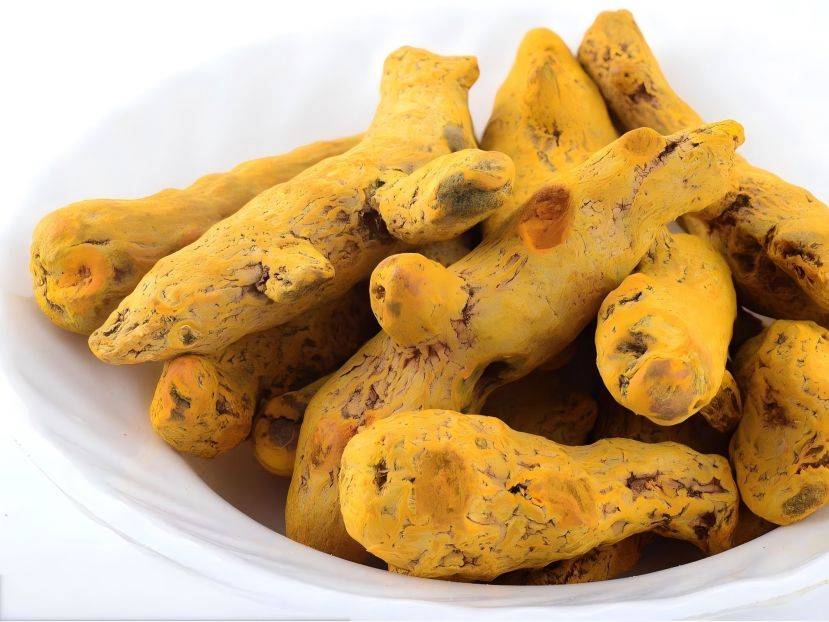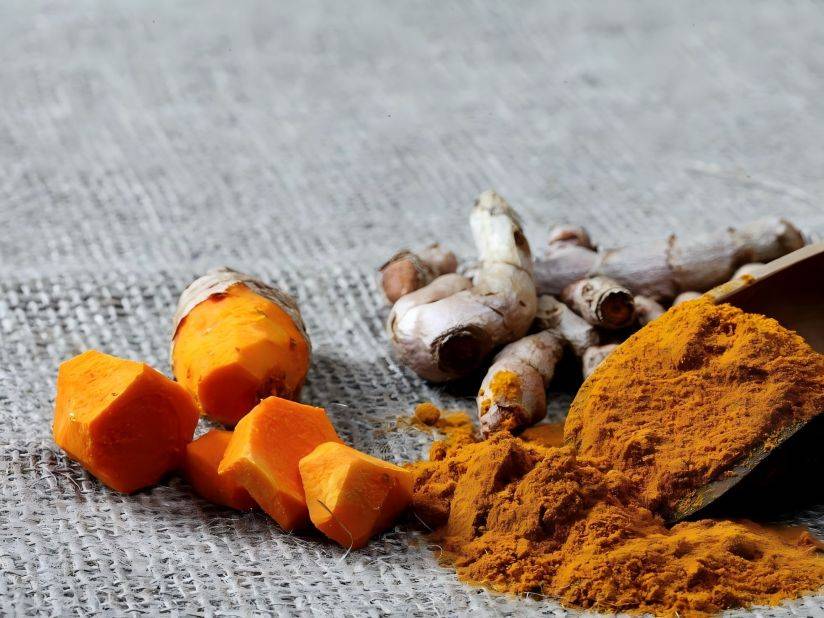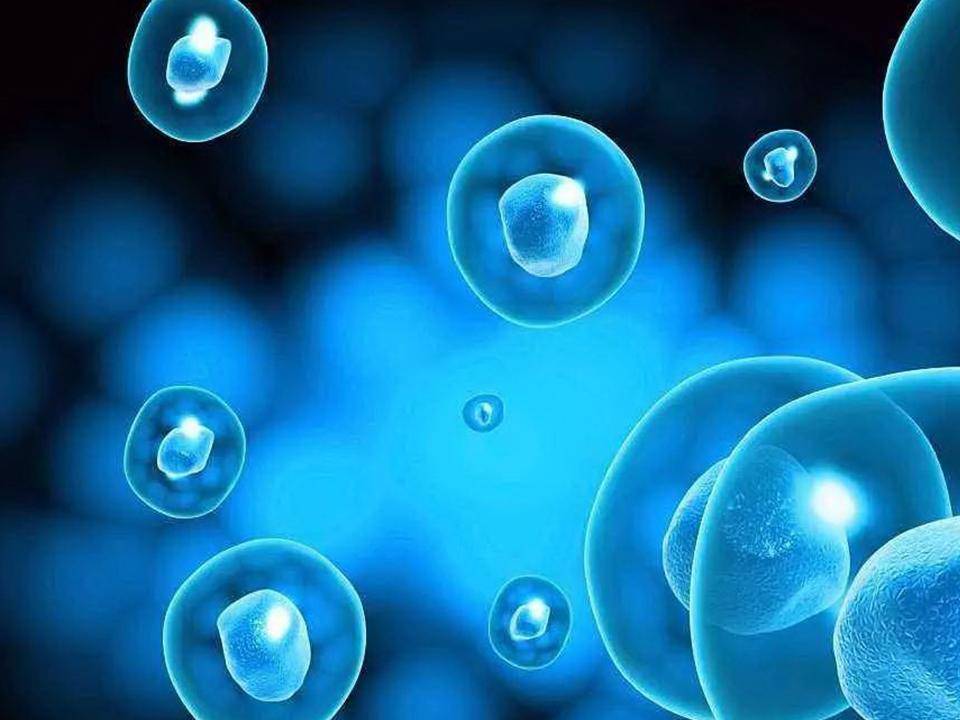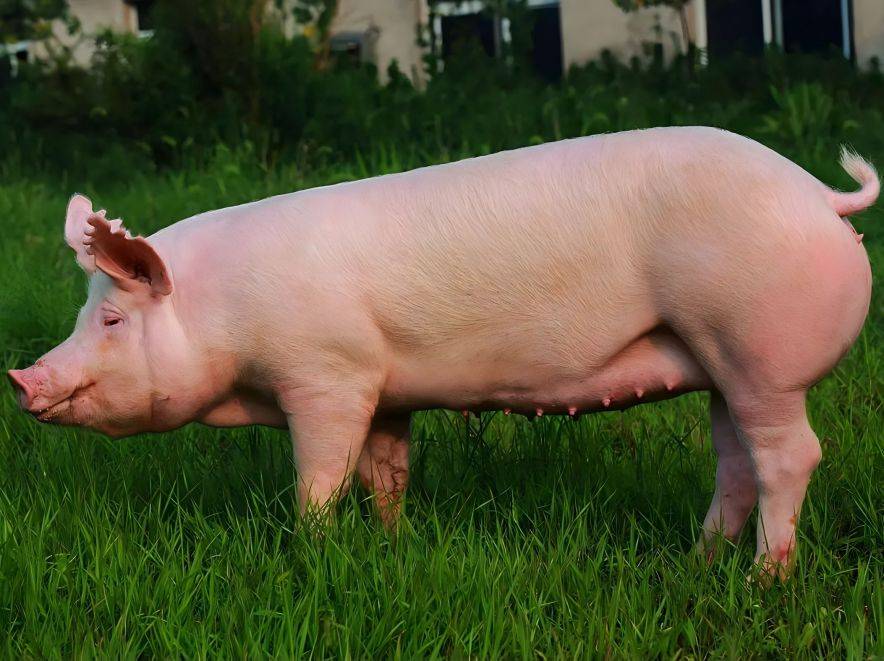How to Extract and Separate Curcumin from Turmeric?
Turmeric is the dried rhizome of the plant Curcuma longa L. (family Zingiberaceae). It is warm in nature, with pungent and bitter flavours. It enters the spleen and liver channels, where it functions to break up blood stasis and promote blood circulation, unblock the channels and relieve pain [1]. Turmeric is rich in curcuminoids, essential oils, flavonoids, sugars, alkaloids, organic acids and other compounds, of which curcuminoids are the main pharmacologically active ingredients[2]. They have a variety of pharmacological effects, such as anti-tumor, anti-inflammatory, anti-oxidant, anti-fibrosis and lowering blood lipids[3-4]. Curcumin is a fat-soluble polyphenolic compound in turmeric. It is an orange-yellow crystalline powder at room temperature, slightly bitter in taste, insoluble in water, but soluble in ethanol, dimethyl sulfoxide, propylene glycol, glacial acetic acid, and alkaline solutions [5-6]. It is unstable in light and heat and has minimal toxicity [7]. It is widely used in the pharmaceutical, health, food, cosmetics and health product industries, and has valuable development and utilization value.
1 Curcumin extraction and isolation preparation
1.1 Extraction
Curcumin is a pigment with a diketone structure, and its parent nucleus is diphenylheptane, which is the main active ingredient in turmeric, accounting for about 70% of curcuminoids[8]. Common methods for extracting curcumin include organic solvent extraction, acid-base extraction, enzyme extraction, supercritical CO2 fluid extraction, sodium salicylate extraction, flash extraction, etc.[9]. However, due to the chemical reactivity of curcumin and its instability in the presence of light and heat, the optimisation of the curcumin extraction method is an important part of the extraction and separation of curcumin from turmeric.
Shan Hou Song et al. [10] compared the curcumin extraction rates from turmeric by the immersion method and the ultrasonic-assisted extraction method using response surface methodology. The results showed that the ultrasonic extraction method gave the best extraction rate of 2.716 mg/g at an extraction temperature of 48 °C, a material-to-liquid ratio of 1:30, and an ethanol concentration of 75%. This shows that ultrasonic extraction has a higher extraction rate than maceration, consumes less solvent, and is simple to operate.
Ma Mingyan and Chen Wei [11] used ultrasonic-assisted ionic liquid extraction to extract curcumin from turmeric, and determined the curcumin content by reversed-phase high performance liquid chromatography. The experimental results showed that the average recovery of curcumin was 98.31%, indicating that the method is not only simple to operate, green and non-polluting, but also has high extraction efficiency and good reproducibility.
Accelerated solvent extraction (ASE) is a new extraction technique that uses a solvent to extract analytes from solid and semi-solid matrices under conditions of increased temperature (50–200 °C) and pressure (6.89–20.7 MPa) in a closed vessel. It has the advantages of being time-saving, consuming less solvent, having high extraction efficiency, being able to be operated in a variety of modes, and process automation and other advantages. Yadav et al. [12] used ethanol, ethyl acetate and acetone as extraction solvents to extract curcumin from turmeric using ASE technology. The results showed that the purity of curcumin extracted with acetone as the extraction solvent was the highest, reaching 46.2%. This is in line with the advantages of ASE technology, which is efficient and time-saving.
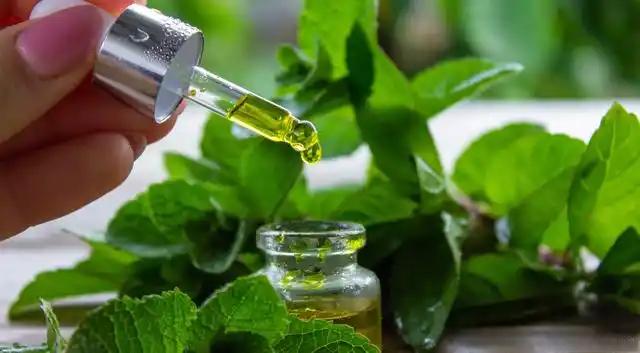
With the rapid development of modern science and technology, the method of curcumin extraction is no longer limited to the traditional organic solvent extraction method. Because curcumin is chemically unstable and the impurity removal process of curcumin extracted by the acid-base method is cumbersome, the acid-base extraction method is no longer the best method for extracting curcumin. Enzyme extraction is based on the acid-base extraction method, and the addition of cellulase, pectinase, etc. speeds up the extraction rate and shortens the extraction time. However, because the enzyme method requires mild conditions, it is difficult to accurately control the pH of the process and achieve the best extraction rate. At present, ultrasonic extraction is the main method for extracting curcumin from turmeric. It has the advantages of being easy to operate and highly efficient, but it is not suitable for large-scale extraction. Accelerated solvent extraction can better improve the limitations of ultrasonic extraction, which is only suitable for small-scale extraction. However, because this method needs to be carried out under high temperature conditions, the structure of curcumin is easily destroyed under high temperature conditions. Therefore, the development of an efficient and economical extraction technology for large-scale production is the primary task in the development and utilization of curcumin.
1.2 Separation and preparation
The crude curcumin obtained by extracting turmeric with organic solvents contains a large number of impurities such as sugars, sterols, and fatty acids, which reduce its purity and affect subsequent production and use. Therefore, the crude curcumin must be further separated and purified. Traditional methods of separation and purification include organic solvent extraction, acid-base precipitation, activated carbon adsorption column chromatography, polyamide adsorption, recrystallization, and macroporous resin adsorption.
In recent years, the widespread use of molecular imprinting technology, S-8 resin separation technology and other chromatographic techniques in the separation and purification of compounds has laid the foundation for the selection of curcumin separation and purification methods. Chen Lingtong [13] compared the yield of curcumin under magnetic stirring and mechanical stirring conditions, and found that the yield of magnetic stirring was higher than that of mechanical stirring. The temperature was lowered at a rate of 10 °C per minute, and magnetic stirring and with the addition of seed crystals, the curcumin was purified by cooling crystallization, and the results showed that the purity of the curcumin reached 93.5% after one crystallization and up to 99.8% after three crystallizations. This shows that slow cooling and the addition of seed crystals can significantly improve the purity of the crystals.
Zhou Peipei et al. [14] found in a series of experiments that the purity of curcuminoid compounds can be increased by 25.28% after purification with S-8 resin, indicating that S-8 resin can be used for the preliminary purification of curcuminoid compounds. Wang et al. [15] investigated the selective recognition ability of the molecularly imprinted polymer membrane of curcumin to curcumin, demethoxycurcumin and bisdemethoxycurcumin, and found that the imprinted membrane had significantly higher selectivity for curcumin than for demethoxycurcumin and bisdemethoxycurcumin. This indicates that the curcumin molecularly imprinted polymer membrane can effectively separate and enrich curcumin, and is efficient, environmentally friendly and low-cost.
2 Pharmacological effects
2.1 Antitumor
Curcumin is an important active ingredient in turmeric that exerts antitumor effects. According to research, the antitumor mechanism of curcumin includes the following three aspects: (1) inhibiting tumor cell proliferation and inducing apoptosis; (2) inhibiting tumor cell migration and invasion; (3) inhibiting tumor cell angiogenesis and other ways to achieve antitumor effects.
Chen Jiaquan et al. [16] studied the effects of curcumin at different concentration gradients on the proliferation and cell migration of ovarian cancer cells SKOV3, and measured the MMP-9 content of the ovarian cancer cell culture medium after curcumin treatment by ELISA. The results showed that curcumin exhibited time- and concentration-dependent inhibition of ovarian cancer cells. It is speculated that the inhibitory effect of curcumin on the proliferation and migration of ovarian cancer cells may be related to the induction of apoptosis in cancer cells and the inhibition of MMP-9 expression. It has been reported that the inhibitory effect of curcumin on the proliferation, migration and invasion of breast cancer cells may be related to its downregulation of miR-7641 and promotion of PTPN14 expression [17].
Tang et al. [18] experimentally studied the combined intervention of curcumin and astragalus polysaccharide in HCC orthotopic tumors in nude mice derived from HepG2 cells. The results showed that after the intervention, the tumor tissue had sparse blood vessels with few branches, a regular shape with intact vascular walls, and closely arranged vascular endothelial cells, and the tumor tissue blood vessels tended to normalize. This indicates that curcumin not only inhibits angiogenesis, but also induces the normalization of tumor blood vessels and improves the morphological structure of tumor blood vessels. In addition, curcumin can also inhibit tumor growth by inhibiting the activation of NF-КB and STAT3 in combination with celecoxib, thereby achieving anti-tumor activity [19].
2.2 Anti-inflammatory
Inflammation occurs mainly due to different degrees of stimulation induced by biological or chemical factors, such as burns, infections, and corrosion caused by chemical agents [20]. Sordllo and Helson [21] showed that curcumin can inhibit the activity of pro-inflammatory cytokines interleukin-1, interleukin-6, and tumor necrosis factor-α, block the release of cellular inflammatory factors, to achieve an anti-inflammatory effect. Bao Cai-cai et al. [22] observed the anti-inflammatory effect of curcumin on experimental autoimmune encephalomyelitis (EAE) in mice. The results showed that curcumin can alleviate the nerve function damage in the course of EAE, down-regulate the peripheral and central inflammatory response in the course of EAE, and up-regulate the expression of Atg-5 and LC3-Ⅱ and the autophagy level of central nerve cells in the central nervous system, to achieve the suppressive effect of curcumin on the inflammatory response in the EAE process.
Qian et al. [23] prepared a series of new curcumin dicarbonyl analogues (DACS) and evaluated their anti-inflammatory properties. Preliminary results showed that most compounds could effectively inhibit the production of LPS-induced tumor necrosis factor (TNF)-α and interleukin-6 (IL-6), thereby inhibiting the occurrence of inflammatory reactions. In addition, curcumin can also achieve an anti-inflammatory effect on rats with rheumatoid arthritis by improving the abnormal blood rheology and inhibiting the expression of inflammatory factors [24].
2.3 Anti-fibrosis
Curcumin can also exert anti-pulmonary fibrosis, anti-hepatic fibrosis, anti-cardiac fibrosis and anti-renal fibrosis effects through different pathways, and is widely used in clinical treatment [25]. It has been reported that curcumin can induce apoptosis of pulmonary fibroblasts by promoting the release of apoptosis-inducing factors from mitochondria, thereby achieving the effect of anti-pulmonary fibrosis [26]. Han Gang et al. [27] found that curcumin solid dispersions can effectively inhibit the activities of alanine aminotransferase (ALT) and aspartate aminotransferase (AST) in mouse serum, effectively reduce acute liver injury in mice caused by carbon tetrachloride, improve the degree of liver injury, and have significant hepatoprotective effects. Curcumin can also down-regulate iNOS expression, thereby achieving curcumin's protective effect against selenium-induced liver and kidney toxicity [28], thereby preventing liver damage from progressing further towards liver fibrosis [29].
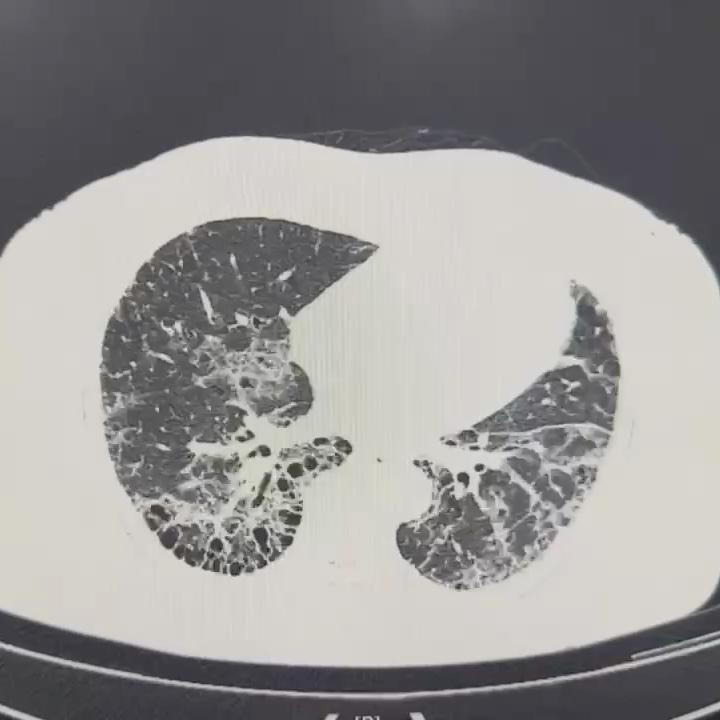
Curcumin can also exert an anti-myocardial fibrosis effect by balancing collagen degradation and synthesis after myocardial infarction [30]. In addition, curcumin has a bidirectional effect on renal tubular epithelial cells. Curcumin can significantly promote the proliferation of human renal tubular epithelial cells (HKC) and maintain its phenotype in the concentration range of 3.125–25.000 μmol/L. It can resist the TGF-β1-induced transformation of HKC into spindle cells, inhibit the expression of epithelial TGF-β1 and type I collagen on the cells, and promote the expression of bone morphogenetic protein (BMP-7), which effectively prevents renal fibrosis; however, high concentrations of curcumin (100.000 μmol/L) have an inhibitory effect on HKC proliferation [31].
2.4 Lowering blood lipids
Dyslipidemia is a major risk factor for coronary heart disease. Studies have shown that curcumin can significantly reduce plasma total cholesterol (TC), triglycerides (TG), and low-density lipoprotein cholesterol (LDL-C) levels, and increase high-density lipoprotein cholesterol (HDL-C) levels [32]. It has been reported that curcumin has a significant cholesterol-lowering effect, and its mechanism of action may be related to inhibiting the body's absorption of cholesterol and promoting the body's degradation of cholesterol [33]. According to research by Xiaobing Dou [34], the mechanism of curcumin's hypolipidemic effect is related to upregulating the activity of hepatic phthalyl coenzyme A reductase and enhancing fatty acid metabolism.
2.5 Cardioprotection
A large number of cardiovascular disease studies have shown that curcumin has a significant anti-myocardial damage effect. Liu et al. [35] found that curcumin can significantly improve myocardial damage induced by coronary microembolism (CME), and the mechanism may be related to the inhibition of myocardial cell apoptosis and the occurrence of myocarditis mediated by the TLR4/MyD 88/NF-КB signaling pathway. Ma Rongzhen et al. [36] established a sepsis model by ligating and perforating the cecum of mice and investigated the cardioprotective effect of curcumin pretreatment in septic mice. The results showed that curcumin pretreatment can inhibit oxidative stress damage and apoptosis in myocardial tissue by activating the SIRT1 signaling pathway, thereby improving myocardial damage caused by sepsis. This shows that curcumin can protect the heart by activating the SIRT1 signaling pathway to inhibit oxidative stress damage and apoptosis.
Yao Bohua and Jiang Weihong [37] found in animal experiments that curcumin post-treatment can significantly upregulate the activity and expression of heme oxygenase 1 (HO-1), and can significantly inhibit myocardial oxidative stress damage after myocardial ischemia/reperfusion (I/R) injury. indicating that curcumin can alleviate I/R through its antioxidant effect, and that its mechanism of action may be related to upregulating the activity and expression of HO-1 protein. In addition, curcumin can also effectively improve cardiac dysfunction caused by mechanical trauma by inhibiting systemic inflammatory response, reducing oxidative stress response, and lowering Ca2+ levels [38].
2.6 Other
Modern pharmacological studies have found that curcumin, in addition to the aforementioned anti-tumor, anti-inflammatory, antioxidant, anti-fibrosis, cardioprotective, and lipid-lowering effects, has a variety of pharmacological effects such as antioxidant, anti-anxiety, neuroprotection, liver protection, and improvement of intestinal flora imbalance [39-46].
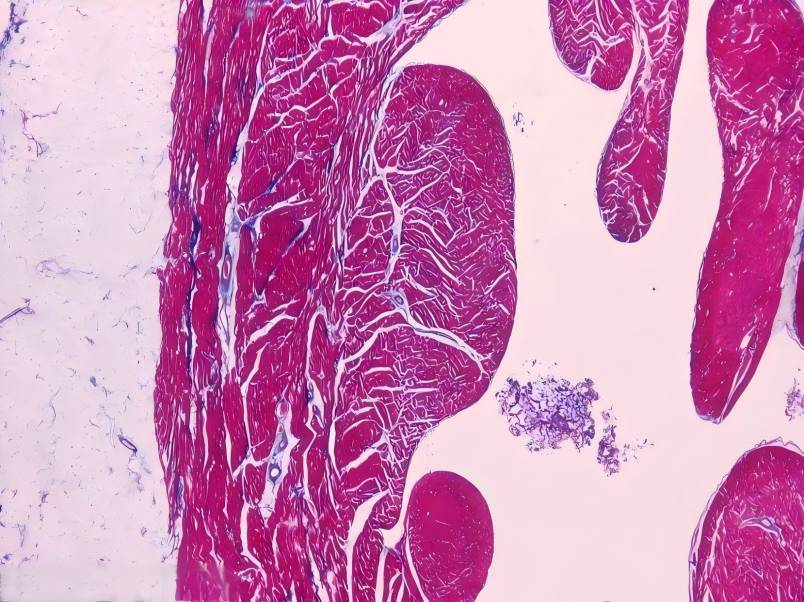
3 Application research
Curcumin not only prevents and treats many diseases, but also has good development prospects in the food additive, health product, and cosmetic industries [47-49]. Curcumin is a green and natural food preservative that is non-toxic and harmless, and has antibacterial, antioxidant, and other preservation effects [50]. Wang Yixin et al. [51] studied the combined bacteriostatic effect of curcumin and piperine, and the results showed that the bacteriostatic zone was largest when the curcumin-piperine ratio was 40:1, the minimum inhibitory concentration (MIC) was reduced, the bacteriostatic pH range was wider, and the preservation time was significantly extended. This indicates that curcumin is a natural food preservative.
4 Summary and outlook
The poor stability and low polarity of curcumin significantly reduce its bioavailability, making it a major challenge to develop new dosage forms of curcumin. Therefore, research on improving the bioavailability and stability of curcumin using modern technologies has become an academic hotspot. It has been reported that the curcumin content in the precipitate produced after dispersion of curcumin self-nanoemulsion (Cur-SNEDDS) in artificial gastrointestinal fluid is about 95% of the curcumin raw material, and the crystal form is changed without changing the chemical structure, so that curcumin occurs in the dispersion system with intermolecular forces mainly based on hydrogen bonds, significantly improving the in vitro release and intestinal absorption of curcumin [52].
In addition, modern pharmaceutical technologies such as nanotechnology, encapsulation, microcapsules, liposomes, and targeted formulations can also significantly enhance the stability of compounds and improve drug bioavailability. It has been reported in the literature that solid self-nanoemulsifying drug delivery systems (S-SNEDDS) can also effectively improve the oral bioavailability of curcumin and accelerate the prevention of neuropathic pain in rats [53]. Wen Nanchuan et al. [54] prepared curcumin dimer sustained-release nanoparticles and studied the effects of different drug-to-polymer mass ratios and other factors on the properties of the nanoparticles. The results showed that curcumin dimer sustained-release nanoparticles not only have a very high drug loading efficiency, which enhances the stability of curcumin, but also achieve the effect of drug sustained-release, providing a scientific basis for the research of new curcumin dosage forms.
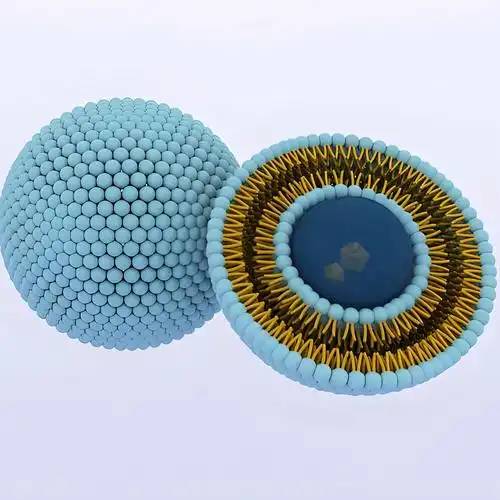
Curcumin nanoparticles encapsulated by microcapsules not only have good stability, but are also more easily absorbed and utilized, and effectively colored, providing a scientific basis for the development of curcumin formulations [55]. Cai Meihong and Liu Xiangdong [56] found that curcumin combined with hyaluronic acid-modified ethanol-based liposomes can effectively relieve psoriasis through regulating the immune system, regulating the expression of NF-κB mRNA, immunoglobulin IgA and IgG, and the content of IL-2 and IL-4 in lesional tissue. Studies have also shown that curcumin TPP-PEG-PCL nanomicelles with small particle sizes, good stability, good mitochondrial targeting and “lysosomal escape” function can significantly enhance the pro-apoptotic effect of the drug on tumor cells and greatly improve the bioavailability of curcumin [57].
At present, although there have been many reports on the effects of different new technologies on the stability and bioavailability of curcumin, due to the complex chemical composition of turmeric, it is difficult for existing extraction and separation methods to meet the unstable nature of curcumin when exposed to light and heat. Therefore, it is urgent to research and develop extraction and separation techniques that meet the special chemical properties of curcumin and apply them to mass production. The process of curcumin absorption and utilization in the body is complex, and there are many factors that affect its bioavailability. Most studies have been limited to in vitro experiments, so the mechanism of curcumin absorption and utilization in the body in combination with new preparation techniques needs to be further explored.
References:
[1] National Pharmacopoeia Commission. Pharmacopoeia of the People's Republic of China: Part I [S]. Beijing: China Medical Science and Technology Press, 2015: 264-265.
[2] Wei Yanting, Hao Erwei, Du Zhengcai, et al. Analysis of quality markers of turmeric based on traditional efficacy and modern research [J]. Traditional Chinese Medicine, 2020, 51(14): 3830-3839.
[3] Zhang Ying, Li Dongmei, Xing Ying. Research progress on the pharmacological effects and carriers of curcumin.
[4] Miao Shuhan, Gao Jinsheng. Research progress on the pharmacological effects of curcumin [J]. Guangming Traditional Chinese Medicine, 2017, 32(15): 2284-2287.
[5] Hu Liangyu, Wang Hongwei, Zhang Jiahui, et al. Research progress on the protective effect of curcumin on multi-organ damage [J]. Medical Review, 2018, 24(20): 4097-4102.
[6] Li Manling, Zou Zhiyu, Zhang Rui. Research progress in the clinical application of curcumin [J]. World Latest Medical Information Digest, 2019, 19(43): 51+53.
[7] Song Liping, Wang Yu. Research progress on the pharmacological effects and mechanisms of curcumin [J]. China Medical Tribune, 2020, 17(20): 29-33.
[8] Wu Hongwei, Li Hongmei, Tang Shihuan, et al. Progress in basic research on the pharmacodynamic substances of turmeric [J]. Chinese Medicine Information, 2011, 18(2): 104-106.
[9] Hou Wenqing, Cen Yuping, Fan Guorong, et al. Research progress on the isolation of curcumin and its in vitro and in vivo analysis methods [J]. Chinese Patent Medicine, 2019, 41(7): 1661-1666.
[10] Shan H S, Chen H, Qu J, et al. Response surface methodology for the optimization of ultrasonic-assisted extraction of curcumin from turmeric [J]. Shandong Chemical Industry, 2018, 47(2): 13-15.
[11] Ma Mingyan, Chen Wei. Simultaneous determination of curcumin and curcuminoids in Curcuma wenchowensis by reversed-phase high performance liquid chromatography with ultrasonic-assisted ionic liquid extraction [J]. Chinese Journal of Pharmacy, 2017, 52(7): 592-596.
[12] Yadav K, Sharma K, Dutta A, et al. Purity evaluation of curcuminoids in the turmeric extract obtained by acceleratedsolvent extraction [J] . Journal of Aoac Intern-ational, 2017, 100(3):586-591.
[13] Chen Lingtong. Purification of curcumin by cooling crystallization [J]. Zhejiang Chemical Industry, 2019, 50 (5): 25-27.
[14] Zhou Peipei, Wang Songlin, Jiang Jianlan. Study on the purification of curcumin compounds by S-8 resin [J]. Ion Exchange and Adsorption, 2015, 31 (5): 391-400.
[15]Wang P,Hu W M, Su W K.Molecularly imprinted poly(methacrylamide-co-methacryli cacid)composite membranes for recognition of curcumin[J] . Analytica Chimica Acta, 2008, 615(1):54-62.
[16] Chen Jiaquan, Ai Hengling, Sun Xue, et al. Research on the effect and mechanism of curcumin on the proliferation and cell migration of ovarian cancer cells [J]. World Journal of Traditional Chinese Medicine, 2020, 6(1): 119-121+174.
[17] Meng Ya, Zhang Xiaowen, Liu Yuguo. Molecular mechanism of curcumin inhibiting the development of breast cancer by regulating the miR-7641/PTPN14 molecular axis [J]. Drug Evaluation Research, 2020, 43 (1): 42-51.
[18] Tang D, Zhang S, Shi X X, et al. Combination of Astragali polysaccharide and curcumin improves the morphological structure of tumor vessels and induces tumor vascular nor- malization to inhibit the growth of hepatocellular carcinoma [J]. IntegrativeCancerTherapies, 2019,18(33):171-173.
[19] Sun Y, Li X, Zhang L, et al. Cell permeable NBD peptide- modified liposomes by hyaluronic acid coating for the synergistic targeted therapy of metastatic inflammatory breast cancer[J] . Molecular pharmaceutics, 2019,16(3): 1140 - 1155.
[20] Liu K, Chen H, You Q S, et al. Curcumin attenuates my- ocardial ischemia-reperfusion injury[J]. Oncotarget, 2017, 8(67):112051-112059.
[21] Sordillo P P,Helson L. Curcumin suppression of cytokine release and cytokine storm. A potential therapy for patients with Ebola and other severe viral infections[J]. In vivo(A- thens, Greece), 2015, 29(1):1-4.
[22] Bao C, Yuan B, Sun M, et al. Curcumin's autophagy regulation and anti-inflammatory effects on experimental autoimmune encephalomyelitis in mice [J]. Chinese Journal of PLA Medicine, 2019, 44(7): 593-599.
[23] Qian J, Chen X, Shu S, et al. Design and synthesis novel dicarbonyl analogs of curcumin(DACs)act as potent anti- inflammatory agents against LPS-induced acute lung in- jury(ALI)[J]. European Journal of Medicinal Chemistry, 2019,167:414-425.
[24] Jiang Bing, Zhang Bosen, Zhang Gang. Anti-inflammatory effect of the traditional Chinese medicine curcumin on rats with rheumatoid arthritis [J]. Xinjiang Traditional Chinese Medicine, 2017, 35(3): 64-67.
[25] Fan Muxia, Zhao Tana, Wang Limin, et al. Research progress of curcumin in anti-fibrosis [J]. Chinese Journal of Traditional Chinese Medicine, 2019, 34(11): 2343-2348.
[26] Chen Lingling, Zhang Deping. The role of apoptosis-inducing factor in curcumin-induced apoptosis of rat lung fibroblasts [J]. Advances in Modern Biomedicine, 2011, 11(14):2654-2657.
[27] Han Gang, Wan Hong, Zhai Guanyu, et al. Protective effect of curcumin solid dispersion on acute liver injury caused by carbon tetrachloride in mice [J].
[28] Ramar M,Raman T,SivagnanamB,et al. Curcumin protects against hepatic and renal injuries mediated by inducible nitric oxide synthase during selenium-induced toxicity in Wistar rats[J]. Microscopy research and technique, 2010, 73(6):631-637.
[29] Li Zhiqiang, Cao Wenfu. Research progress on the mechanism of curcumin in the prevention and treatment of liver fibrosis [J]. Chongqing Medical Journal, 2012, 41(10): 1024-1026.
[30] Liang Guicheng, Xia Hao. Research progress on the cardiovascular protective effect and mechanism of curcumin [J]. Medical Review, 2019, 25(2): 362-369.
[31] Zhu Fangqiang, Chen Minjia, Zhu Ming, et al. Experimental study on the molecular biological mechanism of curcumin against renal fibrosis [J]. Chongqing Medical Journal, 2016, 45(26): 3601-3604.
[32] Wen X. Progress in research on the pharmacological effects of curcumin [J]. Science and Technology Review, 2015 (34): 96.
[33]Arafa Hossam M M.Curcumin attenuates diet -induced hypercholesterolemia in rats[J]. Medical science monitor: International Medical Journal of Experimental and Clini- cal Research,2005,11(7):BR228-234.
[34] Dou Xiaobing. Molecular mechanism study of curcumin on the expression of LDLR in liver cells [D]. Beijing: Beijing University of Chinese Medicine, 2007: 6-7.
[35]Liu Y, Liu Y H, Huang X, et al. Protective effects and mechanism of curcumin on myocardial injury induced by coronary microembolization [ J ] . Journal of Cellular Bio - chemistry,2019,120(4):5695-5703.
[36] Ma Rongzhen, Wu Yan, Chen Xiuju, et al. Research on the effect and mechanism of curcumin pretreatment in alleviating septic cardiomyopathy in mice [J]. Chinese Journal of Extra Corp Circulation, 2020, 18 (1): 48-54.
[37] Yao Bohua, Jiang Weihong. Curcumin exerts its protective effect on myocardial ischemia/reperfusion injury through heme oxygenase 1. [J]. Chinese Journal of Arteriosclerosis, 2014, 22(7): 685-689.
[38]Li X,Cao T,Ma S,et al. Curcumin ameliorates cardiac dysfunction induced by mechanical trauma [J] . European Journal of Pharmacology,2017,8(14):73-80.
[39] Li Jun, Xiong Kun, Gong Yuan, et al. Research progress on the antioxidant mechanism of curcumin based on signal transduction pathways [J]. Chinese Herbal Medicine, 2016, 47 (13): 2373-2380.
[40] Li Yaru, Wang Siting, Ma Xing. Research on the anxiolytic effect of curcumin in stressed mice [J]. Science and Technology Vision, 2020 (26): 161-162.
[41] Shang Hua, Xin Liangjun, Li Wenyuan, et al. Research on the protective mechanism of curcumin against inflammation and neurons in Alzheimer's disease [J]. Integrative Cardiovascular Medicine (Electronic Journal), 2020, 8(14): 62-71.
[42] Wang Hongyu, Wang Shuping, Jia Yongming, et al. Curcumin exerts protective effects on S16 cells through the NF-κB signaling pathway [J]. China Medical Innovation, 2020, 17(21):23-26.
[43] Ren Jing, Zhang Danshen. Research progress of curcumin in the treatment of neurological diseases [J]. Journal of Neuropharmacology, 2018, 8(6): 52-53.
[44] Hao Jie, Huang Juan, Chen Cheng, et al. Curcumin inhibits renal fibrosis in diabetic rats through sphingosine kinase-1: a phosphoinositide 3-kinase signaling pathway [J]. Pharmacology and Clinical of Traditional Chinese Medicine, 2013, 29(6): 10-14.
[45] Zhuo Ma-cuo. Effect of turmeric on TGF-β1 expression in cirrhotic rats at high altitude [J]. China Min Kang Medicine, 2013, 25(18): 20-29.
[46] Li Yun, Zhou Ming-mei, Gou Xiao-jun, et al. Effect of curcumin on specific intestinal bacteria in rats with intermittent sleep deprivation [J]. Traditional Chinese Medicine, 2016, 47(5): 794-798.
[47] Niu Shengyang, Hao Fengge, Xu Qiuya. Research progress on the extraction and application of curcumin. Journal of Henan University of Science and Technology (Natural Science Edition), 2008, 36(4): 58-61.
[48] Wang Wei. Nutritional and health effects of edible natural pigments [J]. China Food and Nutrition, 2005 (1): 45-47.
[49] Du Zhiyun, Lin Li, Deng Yuchuan. Biological activity of curcumin and its application in cosmetics [J]. China Detergent Industry, 2005 (4): 64-66.
[50] Huang Hahe, Huang Chongxing, Zhang Linyun, et al. Research progress on the application of curcumin in food preservation [J]. Food Industry Science and Technology, 2020, 41 (7): 320-324.
[51] Wang Yixin, Jin Yongchuan, Guo Lida, et al. Research on the combined bacteriostatic and preservative effect of curcumin and piperine [J]. Chinese Food Additives, 2018 (4): 171-176.
[52] Chen Xulong, Liang Xinli, Liu Huan, et al. The effect of curcumin's drug existence form on intestinal absorption after dispersion in nanomilks [J]. Chinese Herbal Medicine, 2020, 5 (18): 4637-4645.
[53] Kalamkar R,Wadher S. Formulation and pharmacokinetic evaluation of phosal based zaltoprofen solid self-nanoemul- sifying drug delivery system[J]. Pharmaceutical nanotech- nology, 2019,7(4):328-338.
[54] Wen Naichuan, Liu Zhenbao, Du Peifang, et al. Preparation and performance of curcumin dimer drug-loaded nanoparticles [J]. Journal of Central South University (Natural Science Edition), 2020, 51(9): 2389-2395.
[55] Zhang Pengfei, Liu Aiqin, Zhao Hongshan, et al. Application of microencapsulated curcumin particles [J]. Chemical Industry Management, 2020 (25): 79-81.
[56] Cai Meihong, Liu Xiangdong. Clinical study on the treatment of anti-psoriasis with curcumin combined with hyaluronic acid-modified ethanol plasts [J]. Chinese Journal of Integrated Traditional and Western Dermatology, 2020, 19(4): 322-325.
[57] Yuan Yinhua, Guang Qi, Zhang Shanshan, et al. Preparation of curcumin TPP-PEG-PE nanomicelles with mitochondrial targeting and lysosomal escape functions and research on promoting apoptosis of breast cancer cells [J]. Chinese Journal of Traditional Chinese Medicine, 2020, 45(22): 5495-5503.


 English
English French
French Spanish
Spanish Russian
Russian Korean
Korean Japanese
Japanese